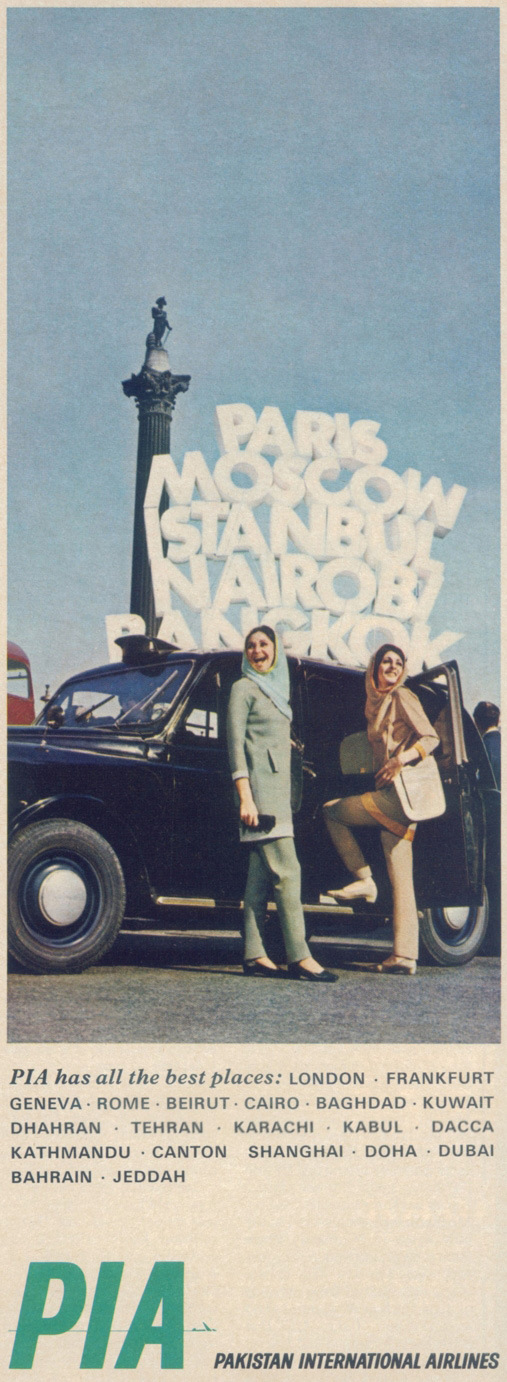By Sonya Rehman
Nishat Mummunka’s love for the aviation industry was almost instantaneous when she began working at American Express’ travel department in 1973 in Lahore, Pakistan, as a fresh graduate. Soon enough, her passion for all things travel led her to lucrative offers from Swiss Air and British Airways, the latter of which required her to head three offices in three different cities across the country.
Today, Mummunka is one of the first Pakistani women to have launched her own IATA-approved travel agency, Travel Easy, in the early 80s – a time often touted as Pakistan’s ‘golden era’ of travel and tourism. And in 2007, she stood as the first female Chairperson for the Travel Agents Association of Pakistan (TAAP) – a body formed in 1974 with the main aim of promoting travel and tourism in Pakistan.

“Things were totally different at that time,” she says. We’re seated at her residence in a quiet neighborhood in Lahore. “Pakistan was one of the safest places in the world. People used to love our country – it truly was a golden period for Pakistan’s travel industry. The Karakoram Highway was a great incentive for groups to do the China-Pakistan route. Foreigners would travel to China and then come to Pakistan to visit the northern areas.”
Mummunka cuts a graceful figure; tall and slender with her shoulder-length hair perfectly curled, she is poised and articulate.
“I’ve heard so many people tell me over the years that Pakistan is far prettier than Switzerland. It’s true; there’s so much natural beauty here, added to that the hospitality of our people – from Lahore’s Anarkali to Peshawar’s Qissa Khwani market and Karachi’s Zainab market: foreigners visiting Pakistan would talk endlessly about the beauty and warmth they’d see and experience.”

Alongside Travel Easy, Mummunka also continues to run her own tourism company, Indus Guides, which she founded with her husband in 1984, at a time when domestic tourism was booming. “This was when the private sector took it upon itself to represent Pakistan at various forums around the world and did a fabulous job at representing the country in the world market,” she says, mentioning that she and her husband would plan regular cultural, religious and historical tours throughout the country for groups visiting from Europe, the United States, Korea and Japan. Tourism in Pakistan, Mummunka says, used to be a lucrative industry.
But 9/11, the ongoing ‘war on terror’ and consequently, the media’s portrayal of Pakistan obliterated the country’s image and hence, its vibrant tourism industry.
Once known as a thriving tourist spot frequented by backpacking hippies, with swinging discos, zero security issues and an outstanding national flag carrier airline, Pakistan International Airlines – PIA – (whose gorgeous air hostesses wore uniforms designed by Pierre Cardin), in addition to the presence of international airlines such as Swiss Air, Lufthansa and KLM; the local tourism industry’s resurgence has been slow and shaky.

Moreover, incidents such as the 2013 massacre of nine foreign trekkers in the Himalayas of Nanga Parbat (in the province of Gilgit-Baltistan) also served to further devastate any sliver of hope and growth.
“In the past media houses such as ZDF [Zweites Deutsches Fernsehen] from Germany would repeatedly visit Pakistan to make documentaries on scenic spots up north, but 9/11 was a huge blow to our local tourism companies. Many closed down. It all went downhill,” Mummunka reminisces, “Did you know in the 80s Pakistanis didn’t need a visa to go to Europe? Today it’s becoming more and more difficult for us to get visas anywhere in the world.”
But Mummunka remains hopeful. “I’m certain there will soon be no no-go spots, the livelihood of our people depends on it. But the media needs to play a positive role in portraying areas in Pakistan that are safe to travel to. Look at countries like Malaysia and Thailand,” she says, “They’re constantly advertising to boost their tourism industry.”
Pointing out Pakistan’s harmonious rapport with China, domestic tourism, Mummunka states, may just get a kick-start what with the arrival of a number of Chinese investors regularly visiting Pakistan for both business and pleasure.
“We have tour groups lined up for the whole year,” she says, “In fact, we have one group arriving this very month. The Chinese are not afraid to come to Pakistan; the Chinese media is not the same as the western media – the [former] portrays Pakistan in a more realistic light.”
While it may be years before local tourism reaches the same level of success as it enjoyed in its halcyon days, the Pakistani government ought to take proactive steps towards reviving an extremely profitable industry.
“No one in the Pakistani government seems to realize that tourism can be your biggest foreign exchange earner,” Mummunka says, “Our politicians don’t get it; they’re busy building underpasses and overpasses in towns that are not only ridiculous, but also a complete waste of money.”
Forbes